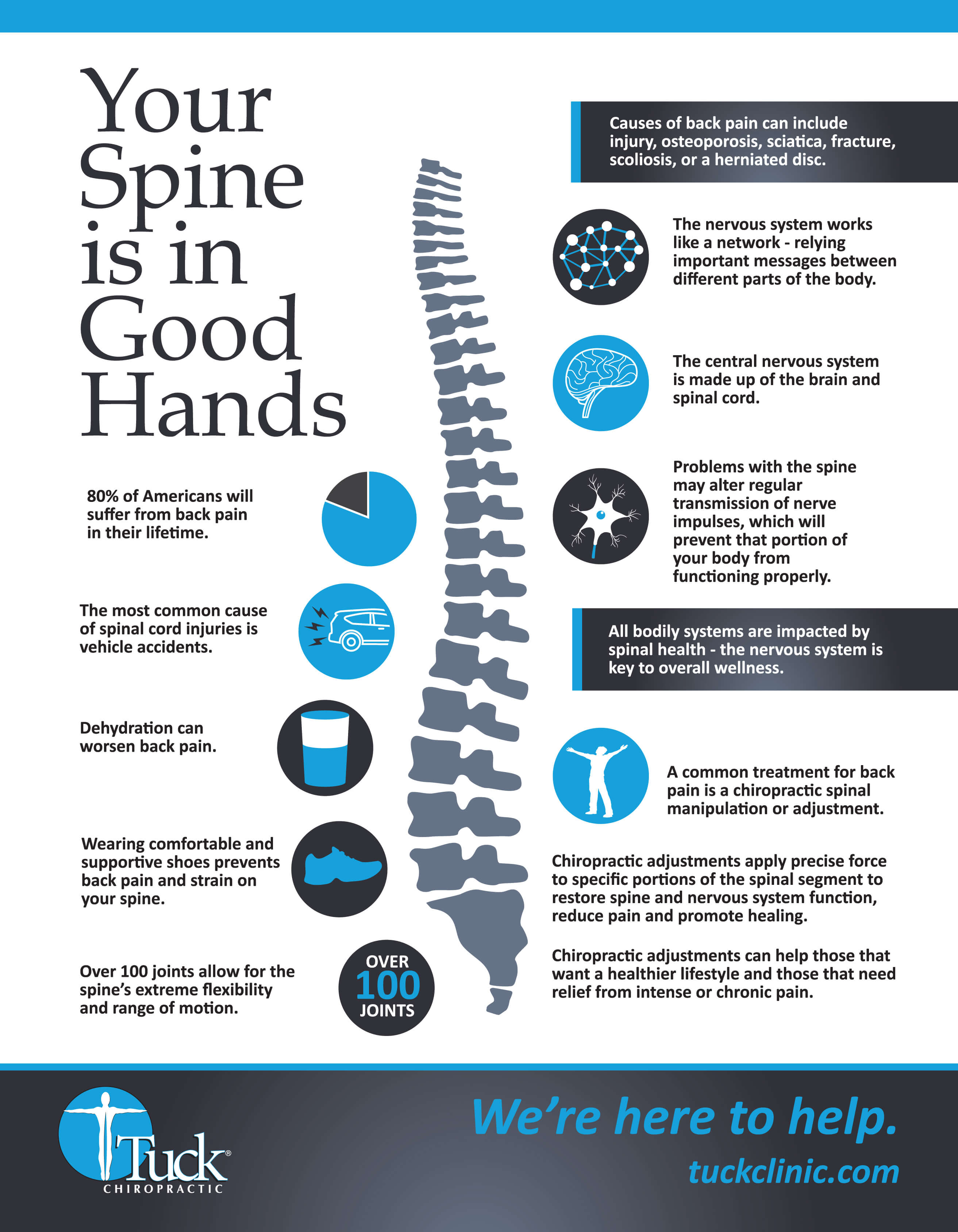The Relationship Between Pose And Back Pain: Techniques For Preserving Correct Positioning During The Day
The Relationship Between Pose And Back Pain: Techniques For Preserving Correct Positioning During The Day
Blog Article
Team Writer-Ibrahim Mcgowan
Maintaining proper stance isn't just about staying up directly; it's about aligning your body in such a way that sustains your back and minimizes the risk of back pain. The way you rest, stand, and relocate throughout the day can significantly impact your spine health. Yet how exactly can you guarantee excellent placement continually, also during active days filled with different activities? Let's dive deeper right into the refined yet impactful modifications you can make to your everyday routine to keep your back happy and healthy.
Significance of Correct Pose
Appropriate position is vital in preserving a healthy back and avoiding discomfort. When you sit or stand with excellent stance, your spine is in alignment, decreasing stress on your muscles, ligaments, and joints. This alignment permits the body to disperse weight uniformly, stopping too much stress on certain areas that can result in discomfort and discomfort. By maintaining your spine properly straightened, you can likewise improve your breathing and food digestion, as slouching can press body organs and restrict their performance.
Furthermore, keeping good position can enhance your general look and self-confidence. When you stand tall with your shoulders back and head held high, you exude confidence and show up even more approachable. Great pose can likewise make you really feel much more stimulated and sharp, as it advertises proper blood circulation and allows your muscle mass to work successfully.
Including appropriate pose right into your daily regimen, whether resting at a workdesk, walking, or working out, is important for stopping pain in the back and advertising general health. Remember, a tiny change in just how you hold yourself can make a substantial difference in how you really feel and function throughout the day.
Common Postural Mistakes
When it pertains to preserving great position, many individuals unknowingly make common mistakes that can contribute to pain in the back and discomfort. One of the most common mistakes is slouching or hunching over while sitting or standing. This setting puts too much stress on the spine and can result in muscular tissue discrepancies and pain over time.
An additional usual error is overarching the lower back, which can flatten the all-natural curve of the back and trigger pain. In addition, going across legs while sitting might feel comfy, but it can produce an inequality in the hips and hips, leading to postural issues.
Using a pillow that's too soft or as well solid while sleeping can additionally affect your placement and add to neck and back pain. Lastly, continuously craning your neck to check out screens or readjusting your placement often can strain the neck and shoulders. Being mindful of these common postural errors can aid you keep much better positioning and lower the threat of back pain.
Tips for Correcting Positioning
To boost your positioning and minimize neck and back pain, it's vital to focus on making small modifications throughout your day-to-day regimen. Beginning by bearing in https://zanejeztn.ambien-blog.com/37514923/uncovering-your-body-s-ability-the-practice-of-chiropractic-treatment . When sitting, ensure how to become an acupuncturist in ny are flat on the floor, your back is straight, and your shoulders are unwinded. Avoid slouching or leaning to one side. Usage ergonomic chairs or cushions to sustain your lower back.
When standing, disperse your weight equally on both feet, maintain your knees a little bent, and tuck in your hips. Involve your core muscles to sustain your spinal column. Take breaks to extend and walk around if you have an inactive task. Integrate hop over to this site that reinforce your core and back muscular tissues, such as slabs or bridges.
While resting, make Visit Homepage of a cushion that sustains the all-natural contour of your neck to preserve appropriate spinal alignment. Prevent sleeping on your tummy, as it can stress your neck and back. By bearing in mind these tips and making small modifications, you can slowly correct your alignment and alleviate pain in the back.
Final thought
Remember, maintaining good posture is key to preventing pain in the back and promoting spine wellness. By being mindful of your alignment, distributing weight equally, and engaging your core muscle mass, you can reduce pressure on your back and reduce the threat of discomfort and injury. Include ergonomic assistance, take routine breaks to stretch, and enhance your core and back muscular tissues to keep correct placement throughout the day. Your back will thank you for it!
